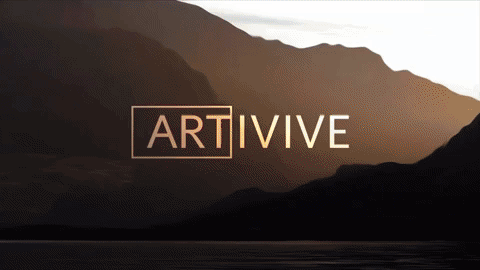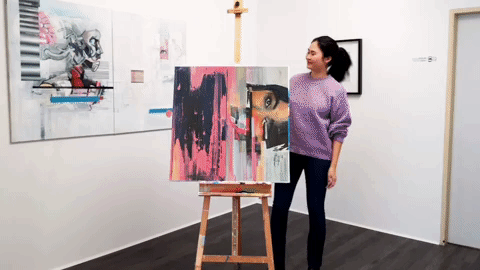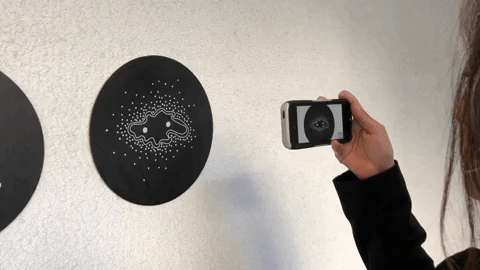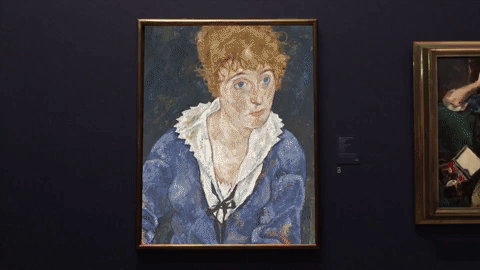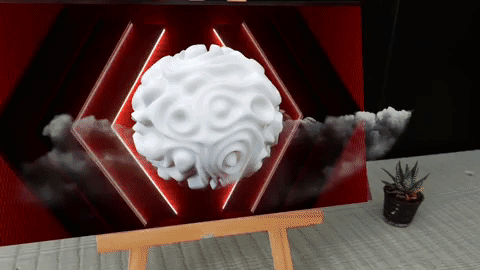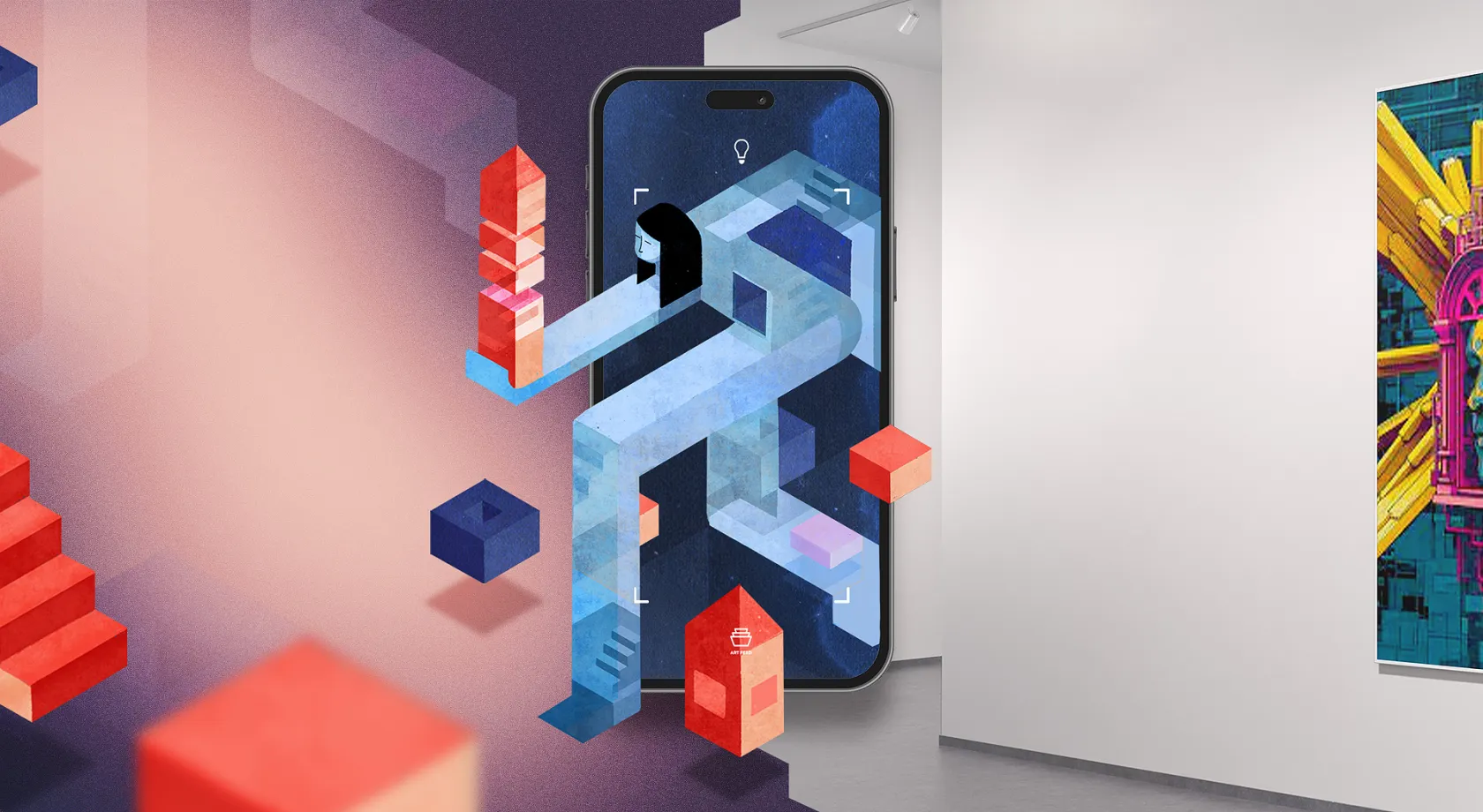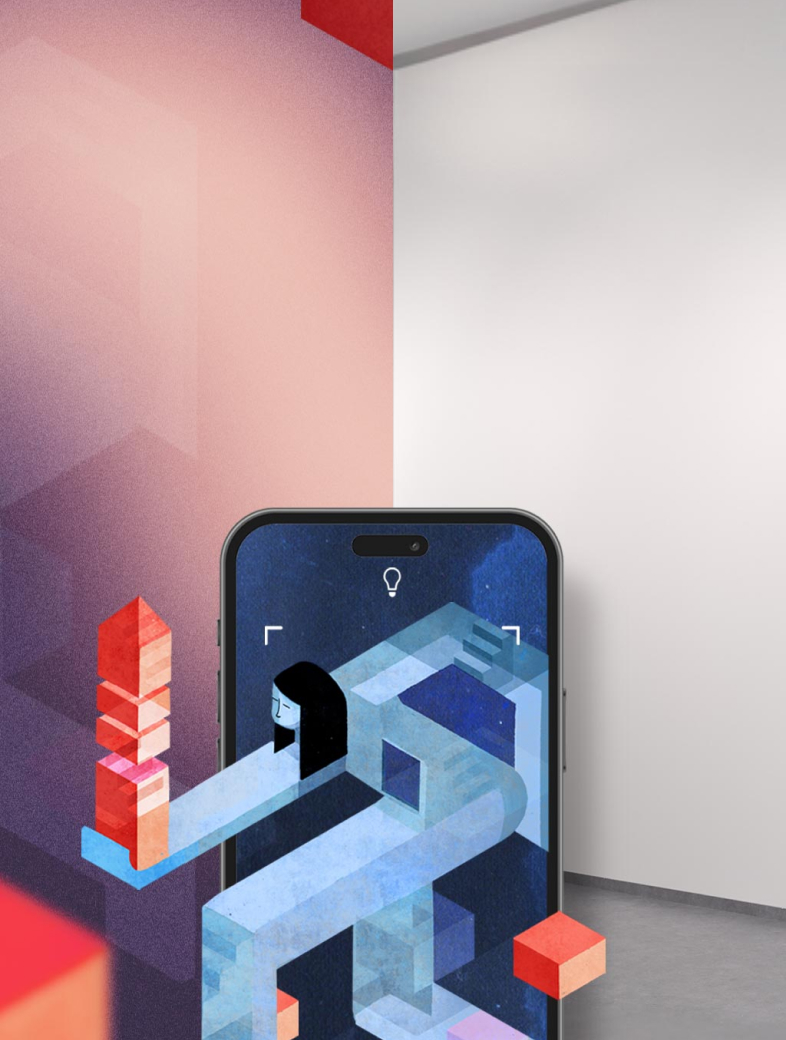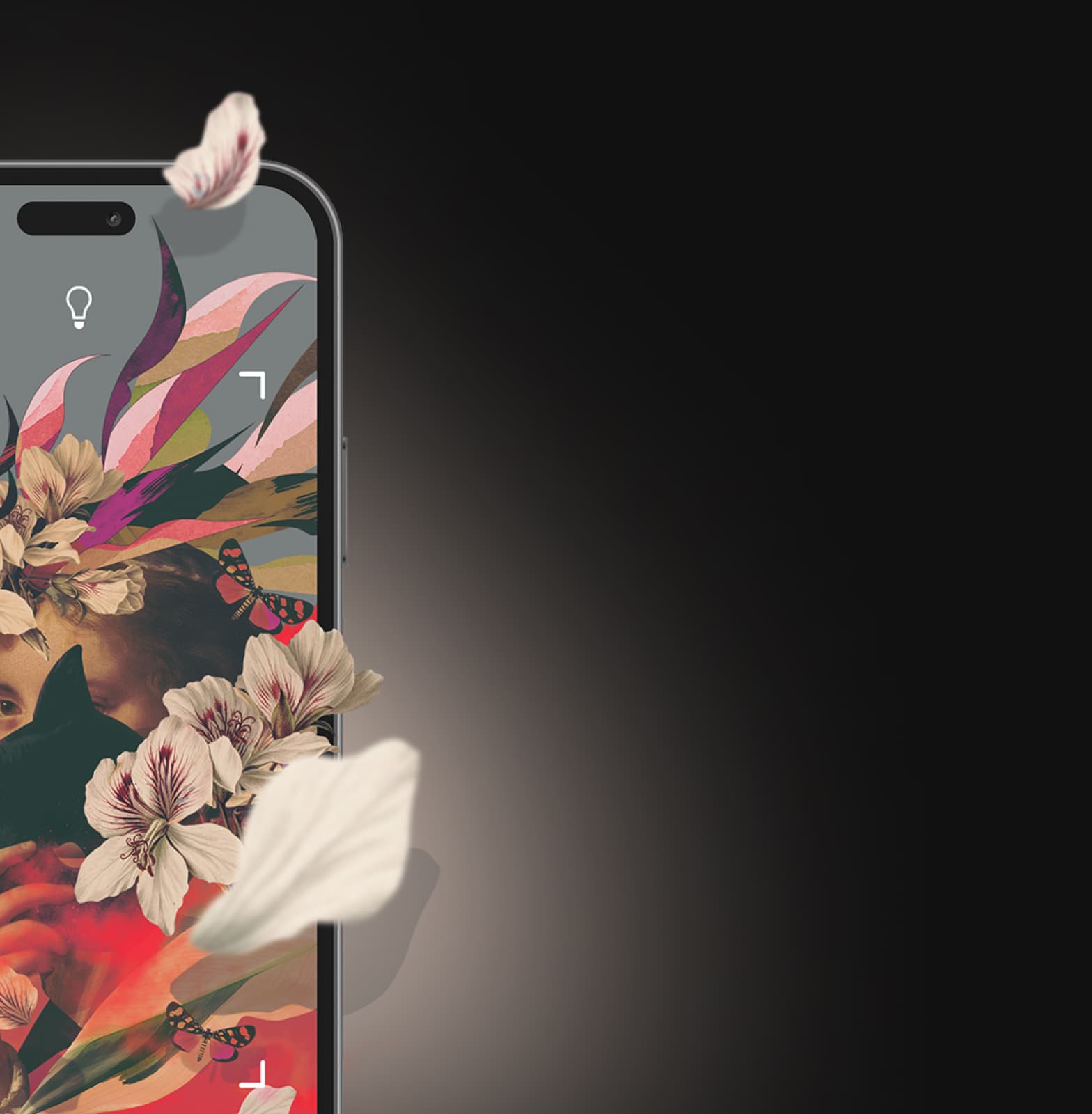Why AR Is Better Than VR For Artists And Creatives
Augmented Reality and Virtual Reality are the next natural progression of creative expression, or, if you will, AR and VR are seen as the evolution of art. To answer the question, “how are AR or VR applicable or relevant to art?” you must first consider the greater question “What is art?” and how can Artivive help me as an artist to express my creative self in new and meaningful ways?
Although there are as many diverse and conflicting answers to that question as there are artists, there is one common theme that runs through them all — art strives to express some element of the human condition, of emotion, of that which moves us.
Now, imagine if your artwork could express not only the singularity — the captured moment of the human condition, but the entire journey. With Augmented Reality, your canvas has the power to become a story. With Artivive your art has the power to transform before the viewers’ eyes. It evolves, it warps, it reshapes itself as the moment of expression evolves. You are no longer sharing a single moment of yourself. You are telling a story.
But why is Augmented Reality (AR) better than Virtual Reality (VR) for artists and creative professionals, and how can you use AR to create artworks which immerse your audience in a moving story, while remaining completely accessible to everyday people? Let’s find out.
Bring Art to Life with Artivive
Does VR have a place in the world of art?
Virtual reality has a big place with art and artists in our current state of novelty within technology. Although somewhat cumbersome, there is an appeal to being able to fully submerge the viewer within your artwork. With VR, you can’t see the world around you, you only see what is being fed to you through your headset. This can have some novel and interesting applications for those who do have access to this kind of tech, provided you don’t mind stepping out of the real world to appreciate your art.
For some, removing the audience from reality might be the goal. In this case, your artwork becomes more of an occasional or once-off experience. Especially as it’s likely that it will only be accessible within a gallery setting for the duration of the exhibition. VR art is a novel and personal experience. The application is particularly pertinent to those artists wishing to express the disjointed alienation our tech-hungry society can feel. It’s almost an ironic way to portray how the tech which is designed to bring us closer together also leaves us feeling disjointed and alone.
What about Augmented Reality (AR) in art?
To fully appreciate the possibilities which augmented reality (AR) brings to you as an artist, it’s important to first fully comprehend what AR is, what Artivive does, and how Artivive puts the power of this endlessly expressive story-telling tool into your hands and into the lives of your audience.
According to Wikipedia: Augmented reality (AR) is an interactive experience of a real-world environment where the objects that reside in the real world are “augmented” by computer-generated perceptual information, sometimes across multiple sensory modalities, including visual, auditory, haptic, somatosensory, and olfactory.
In other words, AR allows us to enhance the current environment or situation by enriching the audience’s perception through digitally enhanced stimulus.
AR allows the manipulator (or in this case the artist) to overlay the real world with layers of sensory information in order to alter the way it’s perceived. This includes additional, movable visual layers to stimulate what your audience sees, auditory layers which manipulate their perception through what they’re hearing (this is particularly interesting to those artists who draw on the emotional value of sound and music in their work to evoke deeper emotion and set the tone for what the audience is feeling when they view the artwork).
There are other aspects to AR, too, all of which will ultimately be available to you as an artist to quite literally augment the reality your audience experiences when they experience your work.
When visualizing the applications of AR in your artwork, it’s important to note that the overlaid sensory information with which you augment your work can be both constructive or destructive.
Either way, the sensory information you are layering over your artwork like another layer of paint is so seamlessly interwoven with the physical end canvas as to appear as if it’s actually changed — as it appears as an immersive aspect of the whole.
Wonderwoman by Litto
Your viewer’s ongoing perception of the real-world environment is being altered as they perceive it. This is a huge distinction from VR which, although it immerses the viewer in a simulated environment, does not give the perception of the real world shifting.
Augmented reality can be used to enhance your work with layers upon layers of live texture. This can be drawn from real-world applications or it can be completely generated from yourself. The information is overlaid in exact alignment with where you actually are in space and time, giving an extremely life-like experience.
At the stARTup Art Fair in Los Angeles.
Disadvantages of Virtual Reality (VR) for art
Up until now, the digital virtual playground has been dominated by VR (Virtual reality). AR creations can be experienced together. The application is enhancing the world the audience is in rather than placing you into a virtual one. VR may be able to place you in a simulated reality — but you will be there alone, and you will have to have some cumbersome tech stuck on your face to see it.
Wielding its power by the means of virtual headsets by Samsung, and fairly exclusive tech such as the HTC Vive and Oculus Rift, the VR landscape may have entertained us, but it has also left us wanting something more human friendly.
One of the undeniable drawbacks of VR remains its exclusivity and cumbersome nature and therefore its lack of real-time application value for the man on the street or the art lover in the gallery.
If you don’t have the right gear or tech, you have no access to the virtual experience.
Why AR is best for Art
AR is highly accessible.
Your viewers need only load an app to their Smartphones to fully experience your virtual masterpiece. Most ordinary people in this day and age, have access to a Smartphone or tablet. There are far more people walking around with a Smartphone in their pockets than there are people with a VR head-set packed into their backpacks! AR allows you to delve into virtual art — creating “living, morphing, mutable” stories. Augmented Reality is a lot like life.
AR is easy to experience
Augmented Reality experiences are easy and intuitive. The audience can share the experience with others, in a public setting like a gallery or museum by simply taking out their device and opening the app.
Another clear advantage of AR over VR creations is the fact that it means a static version of your artwork remains accessible to the naked eye at all times, while the application opens up a secret “second-view” almost or a hidden aspect of your creative expression which you can continue to build on as time goes on.
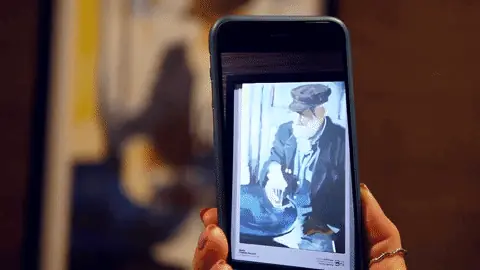
Artist Maria Chalela — Puccini augments her artworks with Artivive
With Artivive’s AR technology at your disposal, your artwork has the power to evolve. It need never be static, and you are never bound to any one single version of the end piece.
Creating art with AR is easy
Artivive has created a place for artists to create in digital space. You can test out your ideas and play with them without having to learn any new programs. Everything is at your fingertips. With Artivive it’s all about the story you want to tell — it’s not about the tech. AR is the easiest and most user-friendly way to take your audience on a journey through art.
Showing the first version of “Portrait of the Artist’s Wife” by E. Schiele in Belvedere, Vienna
We love Augmented Reality because it’s personal, it’s safe, and it’s in our hands
The public is finding it easy to adopt AR into their daily lives because it is coming to them from a place they already trust and understand — their Smartphones (or tablets). The audience has a personal relationship with the device coming into the scene, and there is no need to adopt a new form of tech. Just a simple user interface that Artivive presents to the end-user in a way that is user-friendly and familiar.
Aside from the ease of acceptance and understanding of the medium, most people have already got the tech in their back pocket. They don’t need to go and buy any expensive equipment before they can enjoy a virtually augmented experience. In short — your audience is ready for AR right now.
Scale and Preference in Augmented Reality
Another reason that Augmented Reality applications and software are a better option than their virtual reality counterparts, is because AR is highly scalable. Your end-user can dictate the scale of their preferred rendering of your work according to their circumstances.
For example, in the case of product renderings, AR can by all intents and purposes be rendered to the desired scale, even to life-size. So, if you wanted your audience to see a tree standing before them that reaches across the ceiling, that is just what you’ll get.
How Artivive brings AR to artists and audiences
You’re probably wondering how this seemingly “Space-age” technology can be used by an artist such as yourself. Well, the truth is — the space-age belonged to our grandparents, and thanks to Artivive, the next digital revolution is already in your hands for the taking. Artivive brings two linked solutions.
Artivive 3D feature
For your audiences and viewers — the Artivive app. This is the downloadable visualization tool that will take your end canvas and allow the viewer to unlock the augmented realities you’ve hidden within it. It could be a painting hanging on their wall, or they can take out the app and see its metamorphoses before their eyes. It’s accessible enough to allow any guests visiting their home to simply download the app and unlock the full artwork, too.
For you the artist — Bridge — Artivive’s creation tool. Bridge is where you will add your digital layers to your work. It’s easier to use than most of your basic digital design tools. You won’t need any special training or courses to use it. If you’re unsure of how to get started, you can download the Artivive templates and start experimenting right away.
Registration for Artivive is completely free — so there is no reason not to start playing with our augmented reality applications right away.
The only limiting factor is your own imagination. Anything you can think of you can create, and in ways that come to life like never before. You can take your audience along for the journey and let them see how your thoughts unravel and regroup into new ideas right before their eyes. Why limit yourself to only 2D, or even 3D when you can create in a full augmented sensory medium? Why limit your audience to only a glimpse at your expressive talent or a single word in your creative voice when you could take them on an entire journey, sing them an entire story, or simply immerse them in the inner workings of your mind?

Taken from “100 Best Posters” exhibition in Vienna MAK
Artivive is constantly updating and improving our output and our product, but we’re only as good as your creations. With our product and your imagination, the possibilities are endless.
So, register for free today and let yourself play. ?
